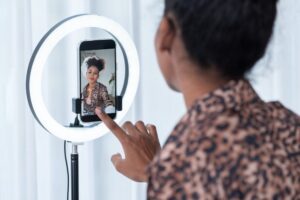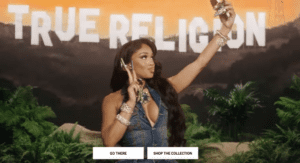As the clock ticks down to the closing ceremony of the 2016 Olympic Games in Rio on Aug. 21, Coca-Cola is one marketer that has been taking advantage of every aspect of the Games—the athletes, the sports, the venues, even staging mini events at dozens of small villages all across Brazil before the Games even began.
The campaign is built on a basic insight: The outcome of any experience is about the memory you are left with after the experience is over. And more often than not, that memory is captured through videos, photos and tweets—by both the brand and consumers—and posted on social, launching the content into cyberspace aglow with followers and fans.

Experiential marketing plays a growing and important role for marketers to directly engage with consumers, one on one, and encourage them to participate in the brand. In fact, more than half of marketers (51%) plan to invest more in experiential content this year. Add to that 98% of consumers capture content at live events and 100% share that content across their social media networks, according to the EventTrack study from The Event Marketing Institute and Mosaic.
Coca-Cola’s Olympic #ThatsGold campaign is grounded in capturing “gold moments” through the marketing experiences it is staging around the Games.
“Each element and experience around the campaign ties to, and supports the next experience,” says James Williams, Olympic marketing and assets director at The Coca-Cola Co.
Coca-Cola, as do many of the athletes participating in the Games, set its sites on celebrating gold—but not just the gold medals found on top of the world’s most elite podium. Now in its 88th year as an Olympic partner, the brand last month rolled out the #ThatsGold fully integrated experiential campaign around the world. The goal is to celebrate with fans across the world the gold feeling that comes from accomplishing something great, however simple, in an everyday moment.
When Coca-Cola began planning its Summer Olympics’ push, it started by creating an idea that would work in multiple channels through a number of key experiential elements, Williams says.
The torch relay, an iconic event in the Olympics, was the kickoff to the #ThatsGold campaign. Coca-Cola, a presenting partner of the Olympic flame on its 95-day journey through Brazil, stopped at 84 small villages where it set up mini-stages each evening as the torch arrived to bring people together in the spirit of the Games through music and dance offs.
“It’s experiential centric and builds excitement for the Games all over the country,” Williams says. “It’s our biggest sampling and experiential activation, sampling 1.3 million Coke and Coke Zero mini cans in remote regions of Brazil.”
Then, when the torch arrived in Rio signaling the start of the 2016 Olympic Games, Coca-Cola was ready with multiple experiences.
For example, The Coca-Cola Olympic Station, a first in the brand’s Olympic history, is billed as the official ‘must-see’ hangout for teens in Rio where they can experience and engage with the Games on their terms. It opened Aug. 6 and is located in the new heart of the city and Official Rio Live Site, Praca Maua. The hang out gives teens the chance to experience #ThatsGold in a number of ways, from innovative tech activities to headline events. The space mixes athletes, musical artists and influencers and links activities to Olympic events taking place that day. Olympic medals are on view. There are dance offs and plenty of photo opps allowing teenagers to create and share their “gold moments” across their social networks.

“To make it a must-go-to destination, we needed to understand from the teenagers themselves how they would find it exciting,” Williams says. “Previously, what we did was very lineal: go here, then there. This year, we created something with a number of different experiences so teenagers could experience it when they wanted to. We are colliding their world with the Olympic world and pop culture.”
Within the Olympic Park itself, The Coca-Cola Experience is a visually stunning activation. There, visitors can enjoy an ice-cold Coca-Cola in a commemorative gold aluminum bottle, celebrate the Olympic torch relay (including a photo with the torch), view highlights of the long-standing partnership between Coca-Cola and the Olympic Games or attend a pin trading and retail experience.
To spread #ThatsGold across the world, Coca-Cola has enlisted a selection of global influencers, including: Australian superstars Cody and Alli Simpson, Canadian actress and fashion blogger Allie Evans, and British YouTuber Jake Boys. The influencers are creating a series of content that defines what #ThatsGold means to them and encourages their social media followers to celebrate their own gold moments.
“At the very beginning we put these all on the table to make sure the campaign can live and breath in these separate experiences,” Williams says. “But then they all come together to engage people in so many different ways. It is imbedded from the beginning. It’s about creating that live moment that people can share with their friends.”
The Rio 2016 Olympic Games will also see the Coletivo Coca-Cola project extend further through Coletivo Events; a training program for young people from Rio de Janeiro’s favelas that aims to empower people from these communities through work. During the Games, Coca-Cola is employing young people from the initiative and training them to work within hospitality, venue operations and experiential roles, giving them valuable work experience and a once-in-a-lifetime chance to be part of the Rio 2016 Olympic Games in their home city.
Coca-Cola has a number of different ways that it measures experiential marketing. It records the number of people it “touches.” It works with IMI to conduct detailed interviews before, during and after the experiences. For example, it conducted surveys during the first week of the torch relay as it came to Brazil and made adjustments based on the responses. It surveyed people again four weeks later to understand sentiment and engagement. It tracks the number of photos taken, how many shares, the use of the hashtag #ThatsGold and buzz around the experiences. And it monitors press coverage and both paid and earned media.
”For this campaign, we wanted to bring it to life—live to people—to really engage them and give them something to talk about and to share,” Williams says.
Olympic Amendment Opens Door for Big and Small Brands
Marketing Olympic Athletes Mask Challenges in Rio




 Network
Network

